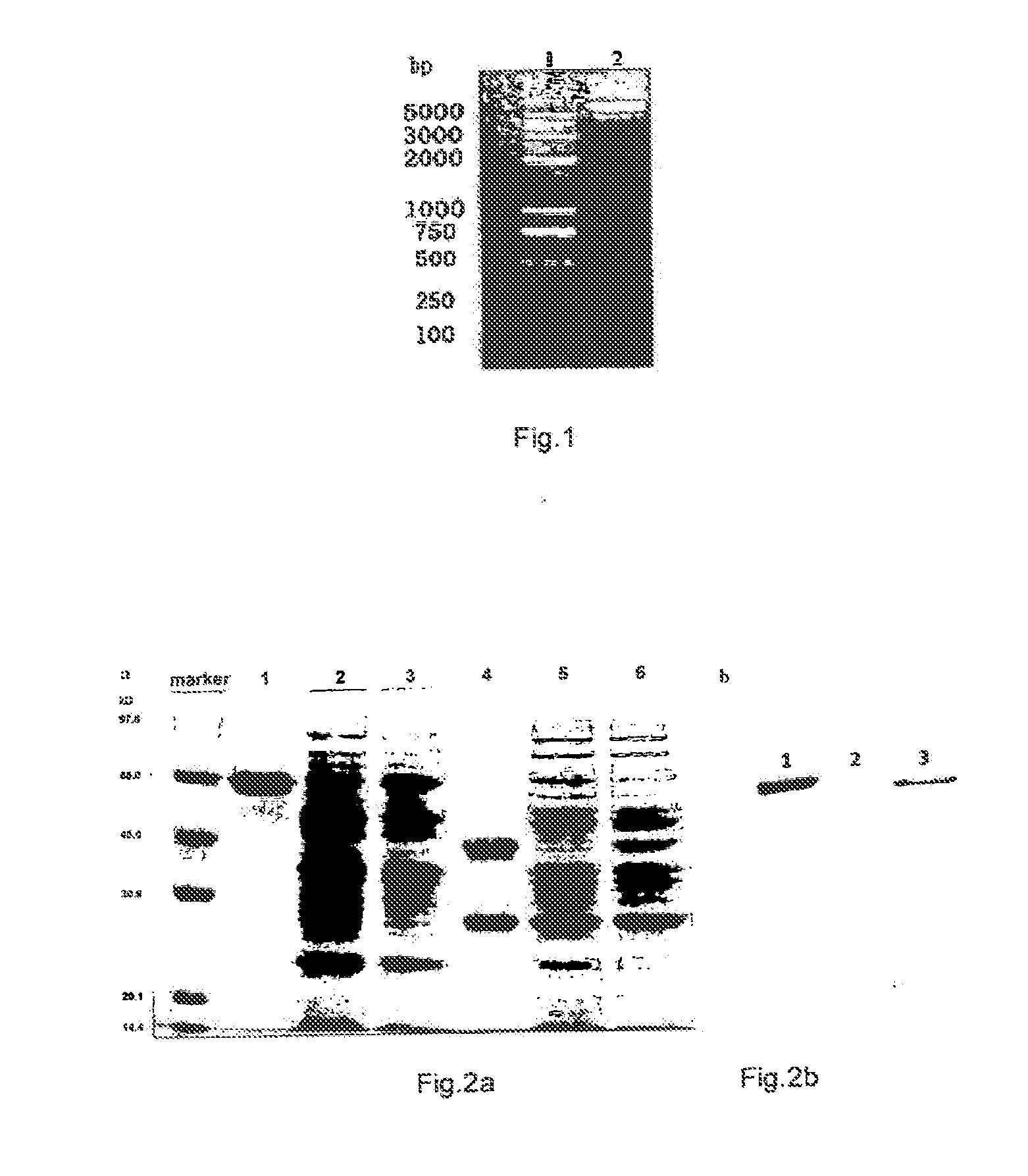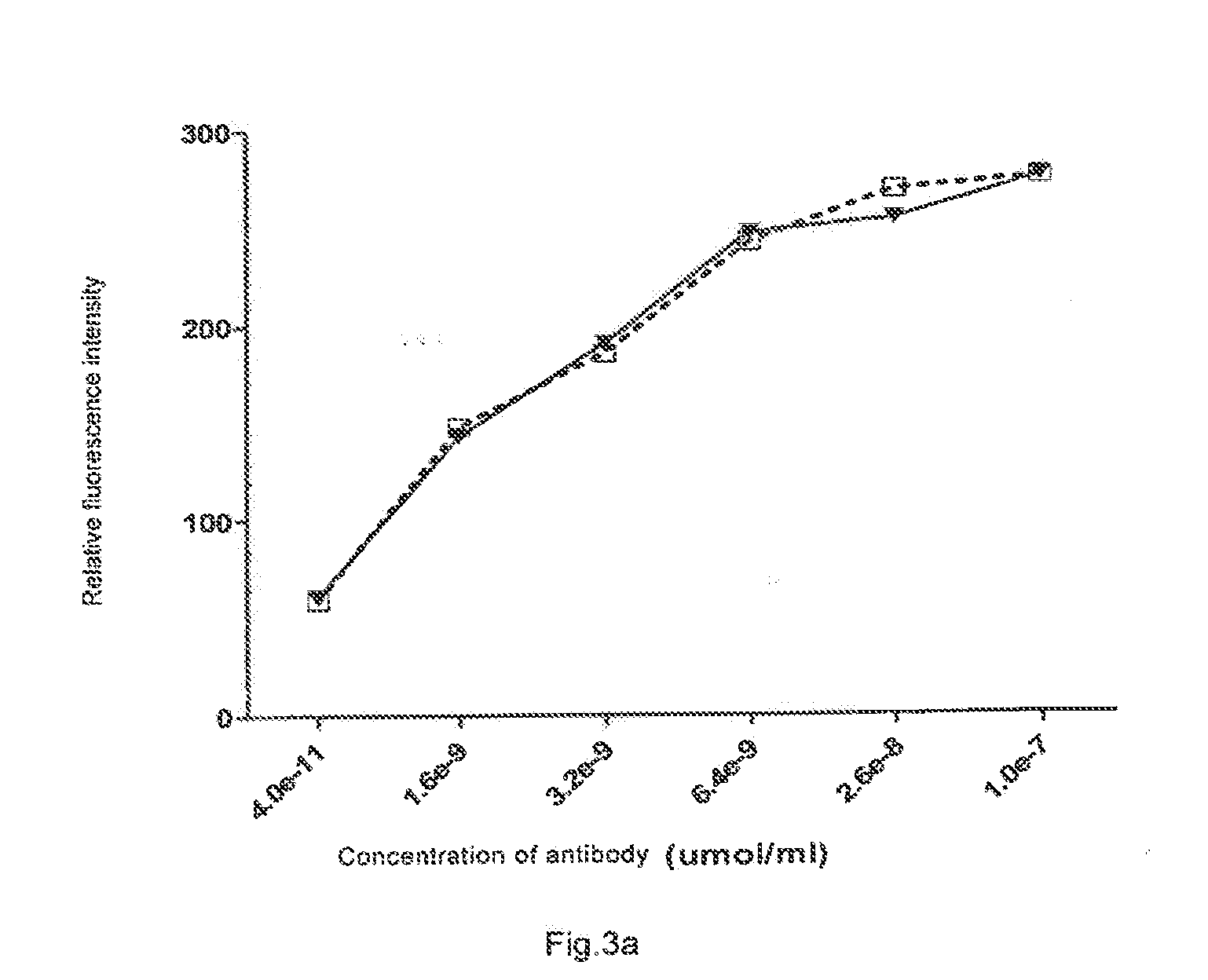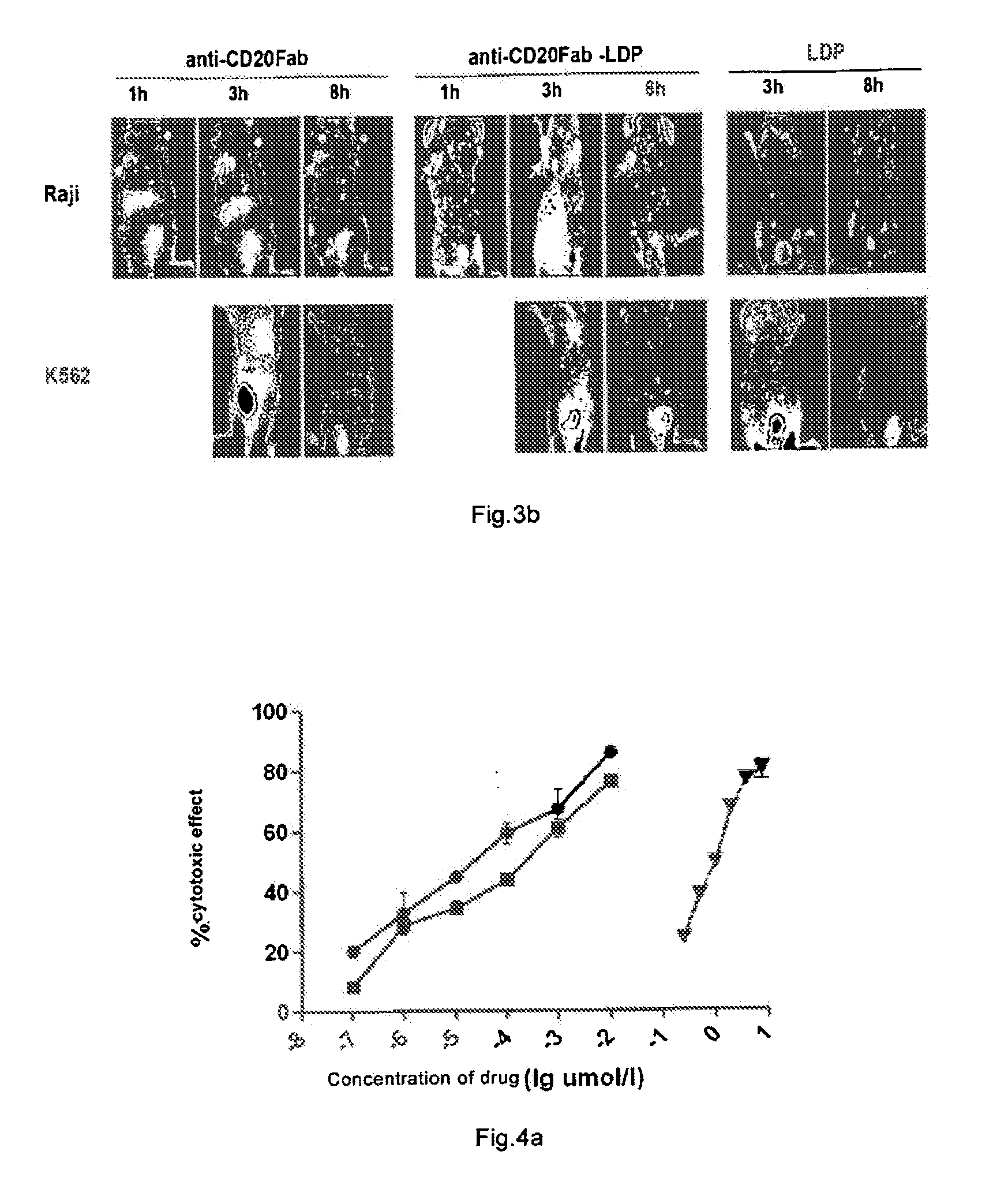Fusion Protein of an Anti-CD20 Antibody Fab Fragment and Lidamycin, a Method for Preparing the Same, and the Use Thereof
a technology of anti-cd20 antibody and fab fragment, which is applied in the field of oncology and biopharmacy, can solve the problems of poor selectivity, high immunogenicity, and more obvious drug resistance issues
- Summary
- Abstract
- Description
- Claims
- Application Information
AI Technical Summary
Benefits of technology
Problems solved by technology
Method used
Image
Examples
example 1
[0114]The construction of the recombinant expression plasmid pCANTAB 5E Fab-LDP
[0115]PCR amplification of CH1:
[0116]The recombinant plasmid pCANTAB 5E Fcd20 Fab′ contains the VH, VL, and the humanized CL and CH1 gene of the anti-CD20 monoclonal antibody HI47, and in the recombinant plasmid pCANTAB 5E Fcd20 Fab′, only CH1 region contains an apal restriction enzyme cutting site. Therefore, the applicant used the recombinant plasmid pCANTAB 5E Fcd20 Fab′ containing Fab′ gene (Inhibition of human B-cell lymphoma by an anti-CD20 antibody and its chimeric (Fab′)2 fragment via induction of apoptosis. YinxingLiu, ZhenpingZhu et. al. Cancer Letters 205 (2004)143-153) as the template to obtain CH1. PCR primers were synthesized by Invitrogen, and the corresponding restriction enzyme cutting sites were introduced, respectively.
[0117]In particular, the PCR amplification was performed by using pCANTAB 5E Fcd20 Fab′ as the template, P1 as 5′ primer and P2 as 3′ primer. The reaction condition was: ...
example 2
Expression and Verification of Fab-LDP
[0131]2.1 The Expression of Fab-LDP
[0132]The single colony of E. Coli. HB2151 containing the plasmid pCANTAB 5E Fab-LDP obtained in Example 1 was seeded in 5 ml 2×YT medium containing ampicillin (Amp) 100 μg / ml, and was incubated overnight under shaking in an constant temperature incubator at 37° C., 200 rpm, and then was transferred into 500 ml 2×YT medium containing Amp 100 μg / ml (1 L 2×YT medium contains 1.6% tryptone, 1.0% yeast extract, 0.5% NaCl, pH 7.4) at 37° C., 200 rpm. After shaking culture for 8 h, the resultant solution was centrifugated by low-temperature high-speed vacuum centrifuge at 6000 rpm, 4′C for 10 min and the bacteria were collected. The bacteria were re-suspended in 1000 ml 2×YT medium containing Amp 100 μg / ml and 1 mM IPTG and were cultured under shaking for 4 h at 30° C., 200 rpm; the bacteria were collected after centrifugation for 10 min at 8,000 rpm, 4° C. and were frozen at −20° C. in refrigerator for further use.
[...
example 3
Immune Activity of Fab-LDP
[0136]Immunofluorescence binding activity of Fab-LDP in vitro was determined by flow cytometer. 1×106 Raji cells were re-suspended in the solution containing different concentration of FITC(fluorescein isothiocyanate)-labeled anti-CD20 Fab fragment in 100 μL PBS (Inhibition of human B-cell lymphoma by an anti-CD20 antibody and its chimeric (Fab2) fragment via induction of apoptosis. YinxingLiu, ZhenpingZhu et. al. Cancer Letters 205 (2004) 143-153) or the solution containing Fab-LDP obtained in Example 2 in 100 μL PBS, and was placed at 4° C. for 1 h and centrifugated at 2000 g for 10 minutes. The supernatant was discarded, the leftover was washed with PBS for three times, the positive rate for the anti-CD20Fab fragment or Fab-LDP to bind Raji cell was determined by Fluorescence Activated Cell Sorter (FACS). It was demonstrated that the anti-CD20Fab fragment had substantially the same activity of binding to Raji cells as the Fab-LDP at the same concentratio...
PUM
| Property | Measurement | Unit |
|---|---|---|
| temperature | aaaaa | aaaaa |
| pH | aaaaa | aaaaa |
| temperature | aaaaa | aaaaa |
Abstract
Description
Claims
Application Information
 Login to View More
Login to View More - R&D
- Intellectual Property
- Life Sciences
- Materials
- Tech Scout
- Unparalleled Data Quality
- Higher Quality Content
- 60% Fewer Hallucinations
Browse by: Latest US Patents, China's latest patents, Technical Efficacy Thesaurus, Application Domain, Technology Topic, Popular Technical Reports.
© 2025 PatSnap. All rights reserved.Legal|Privacy policy|Modern Slavery Act Transparency Statement|Sitemap|About US| Contact US: help@patsnap.com



